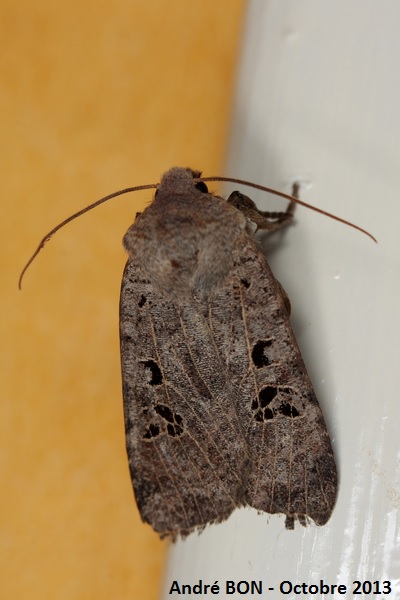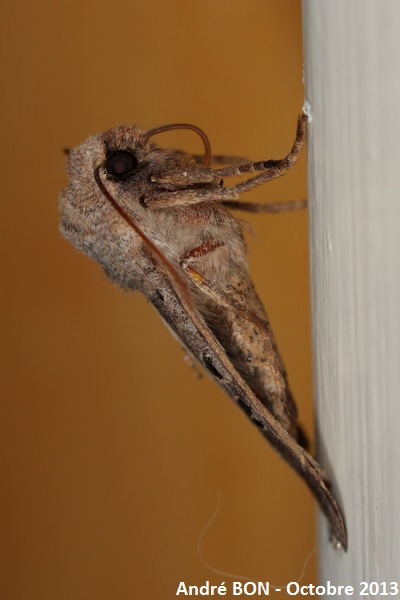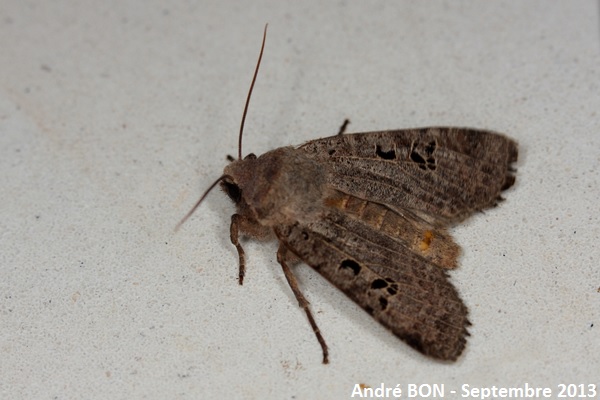


| Black-spot Chestnut (Conistra rubiginosa (Scopoli, 1763)) |



|
|
Scientific name: Conistra rubiginosa (Scopoli, 1763) Common name: Black-spot Chestnut French name: Orrhodie grise, Isolée. Order: Lepidoptera Suborder: Heterocera Family: Noctuidae Subfamily: Noctuinae Wingspan: 32-39 mm. Biotope: Any habitat where host plants grow, hedgerows, woodland edges, parks and gardens, etc. Geographic area: Europe but missing in the more northern regions. It is limited to Turkey in Asia. Flight time: September to April with a peak in February-March if the temperatures are not too low. Number of generations : 1 Caterpillar: Reddish brown with thin pale longitudinal lines. Host plant: Deciduous trees and shrubs in a first time (Oaks (Quercus), Elms (Ulmus), Hawthorns (Crataegus), Blackthorns (Prunus), Willows (Salix), etc.) then the development finishes on various growing plants including Plantains (Plantago). |
The Black-spot Chestnut's fore wings are a grey to brownish grey colour. You can clearly see the lighter coloured veins. The orbicular and reniform spots are grey with black markings crossed by the lighter coloured veins (mainly visible on the reniform spot). The hind wings are greyish. The Conistra rubiginosa immaculata form does not show the black markings and the orbicular and reniform spots are uniform grey but the veins. Conistra erythrocephala is a more reddish colour and shows smaller size black markings. Black-spot Chestnuts are attracted to light and then are sometimes observed inside buildings. |
| [To know more about the Black-spot Chestnut] [Next picture] [Top] |

|
I photographed this Black-spot Chestnut inside the house where it must have been attracted to light. |
| [To know more about the Black-spot Chestnut] [Next picture] [Previous picture] [Top] |

|
Side view. |
| [To know more about the Black-spot Chestnut] [Previous picture] [Top] |

|
I still have to observe the immaculata form but I think that it is rarer. |